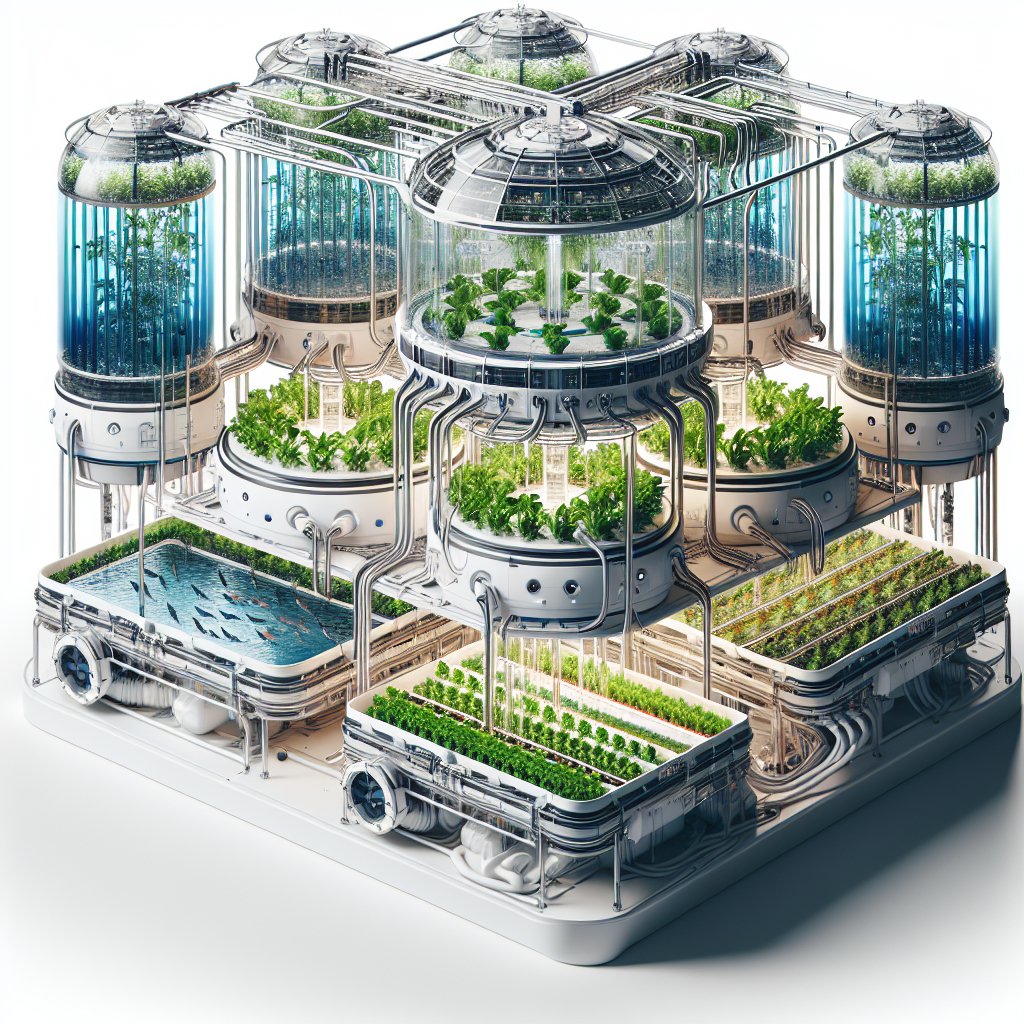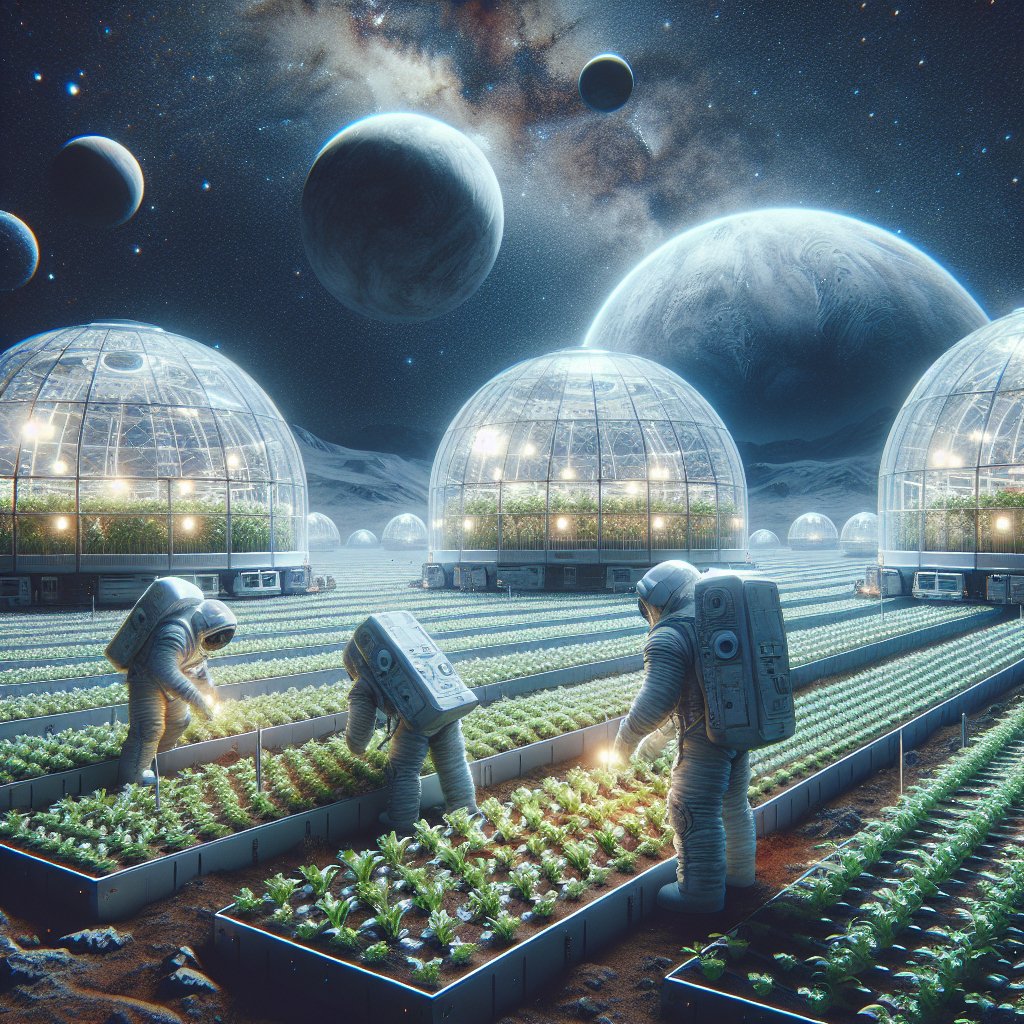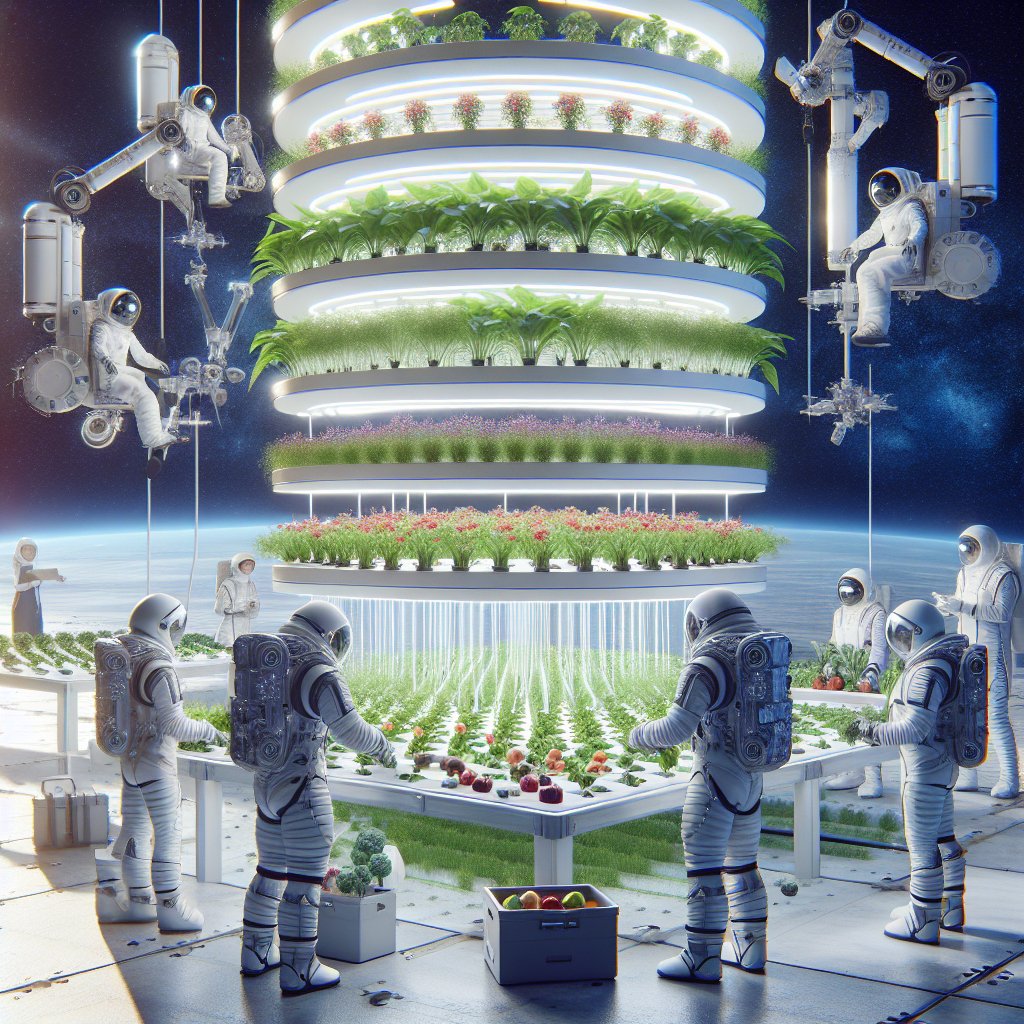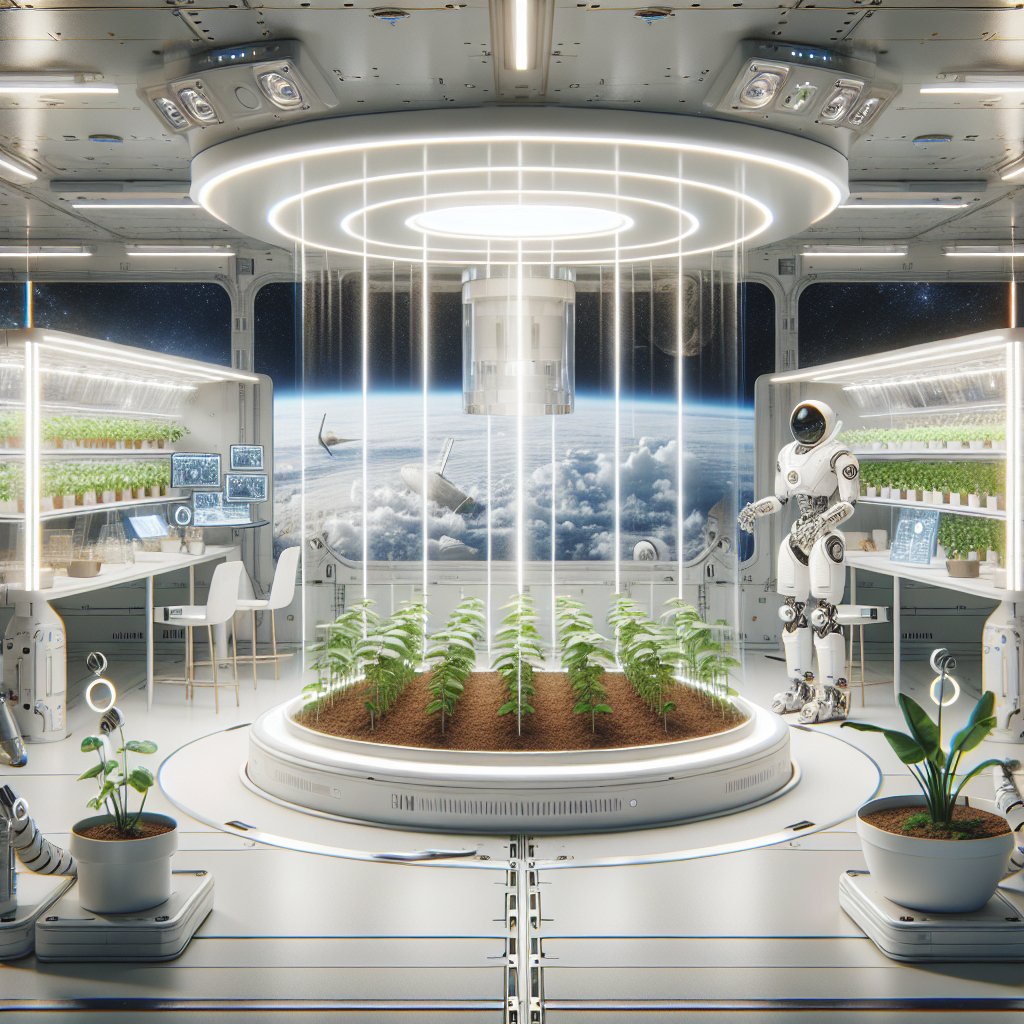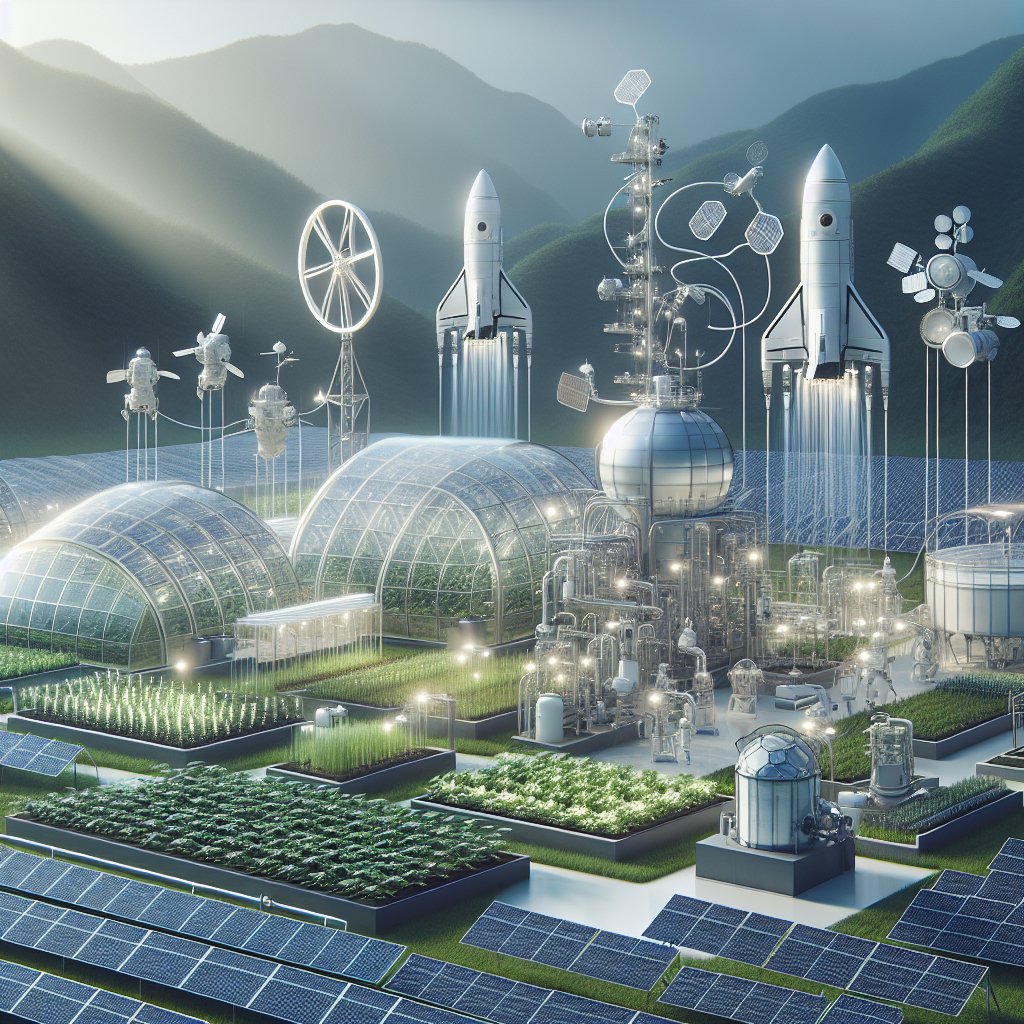The role of aquaponics in space farming systems is becoming increasingly significant as humanity looks to explore and inhabit other planets. As we venture beyond Earth, the need for sustainable food production systems that can operate in closed environments becomes paramount. Aquaponics, a method that combines aquaculture (raising fish) with hydroponics (growing plants in water), offers a promising solution for growing food in space. This article will explore the principles of aquaponics, its potential applications in space farming, and the challenges and innovations that lie ahead.
Understanding Aquaponics
Aquaponics is an innovative agricultural system that integrates fish farming and plant cultivation in a symbiotic environment. In this system, fish waste provides an organic nutrient source for the plants, while the plants help filter and purify the water for the fish. This closed-loop system not only maximizes resource efficiency but also minimizes waste, making it an ideal candidate for space farming.
Principles of Aquaponics
The aquaponics system operates on several key principles:
- Symbiosis: The relationship between fish and plants is mutually beneficial. Fish produce waste that is rich in ammonia, which is converted by beneficial bacteria into nitrates, a nutrient that plants can absorb.
- Water Recirculation: Water is continuously cycled between the fish tanks and the plant beds, ensuring that both organisms receive the necessary nutrients and clean water.
- Space Efficiency: Aquaponics systems can be designed vertically, allowing for high-density food production in limited spaces, which is crucial in a space environment.
- Reduced Resource Use: Compared to traditional farming methods, aquaponics uses significantly less water and land, making it a sustainable option for food production.
Benefits of Aquaponics in Space
As we consider the challenges of growing food in space, aquaponics presents several advantages:
- Self-Sufficiency: Aquaponics systems can be designed to be self-sustaining, reducing the need for resupply missions from Earth.
- Nutritional Diversity: The ability to grow both fish and plants allows for a more varied diet, which is essential for long-term space missions.
- Waste Minimization: The closed-loop nature of aquaponics minimizes waste, making it an environmentally friendly option for food production in space.
- Psychological Benefits: Engaging in gardening and caring for living organisms can have positive psychological effects on astronauts, helping to alleviate stress and improve mental well-being.
Aquaponics in Space Missions
NASA and other space agencies have been exploring the potential of aquaponics for future missions to the Moon, Mars, and beyond. The development of sustainable food production systems is critical for long-duration missions, where resupplying from Earth is not feasible.
Current Research and Experiments
Several experiments have been conducted to test aquaponics systems in space-like conditions:
- Veggie Experiment: NASA’s Veggie experiment aboard the International Space Station (ISS) has focused on growing plants in microgravity. While not strictly aquaponics, it has laid the groundwork for understanding plant growth in space.
- Aquaponics on Earth: Research facilities on Earth are simulating space conditions to study the viability of aquaponics systems. These studies aim to optimize plant and fish growth in environments that mimic the challenges of space.
- Collaboration with Universities: NASA collaborates with universities and research institutions to develop aquaponics systems that can be deployed in space. These partnerships are crucial for advancing the technology and understanding its potential.
Challenges to Overcome
Despite its potential, several challenges must be addressed before aquaponics can be fully implemented in space:
- Microgravity Effects: The behavior of water and nutrients in microgravity is different from that on Earth. Understanding how to manage these differences is essential for successful aquaponics systems in space.
- System Maintenance: Maintaining a balanced ecosystem in aquaponics requires careful monitoring and management. Developing automated systems for monitoring and adjusting parameters will be crucial in a space environment.
- Resource Availability: The availability of resources such as water and energy in space is limited. Aquaponics systems must be designed to operate efficiently within these constraints.
The Future of Aquaponics in Space Farming
The future of aquaponics in space farming is promising, with ongoing research and development aimed at overcoming existing challenges. As technology advances, the potential for aquaponics to play a vital role in sustaining human life on other planets becomes increasingly feasible.
Innovations on the Horizon
Several innovations are being explored to enhance the effectiveness of aquaponics systems in space:
- Advanced Sensors: The integration of advanced sensors and IoT technology can help monitor the health of both fish and plants, allowing for real-time adjustments to the system.
- Genetic Engineering: Research into genetically modified plants and fish that can thrive in space conditions may lead to more resilient and productive aquaponics systems.
- Modular Systems: Developing modular aquaponics systems that can be easily scaled up or down will allow for flexibility in food production based on mission needs.
Conclusion
Aquaponics holds great promise for the future of space farming, offering a sustainable and efficient method for producing food in closed environments. As humanity prepares for long-duration space missions, the integration of aquaponics systems will be crucial for ensuring food security and supporting the health and well-being of astronauts. Continued research and innovation in this field will pave the way for a new era of agriculture that transcends the boundaries of our planet.
